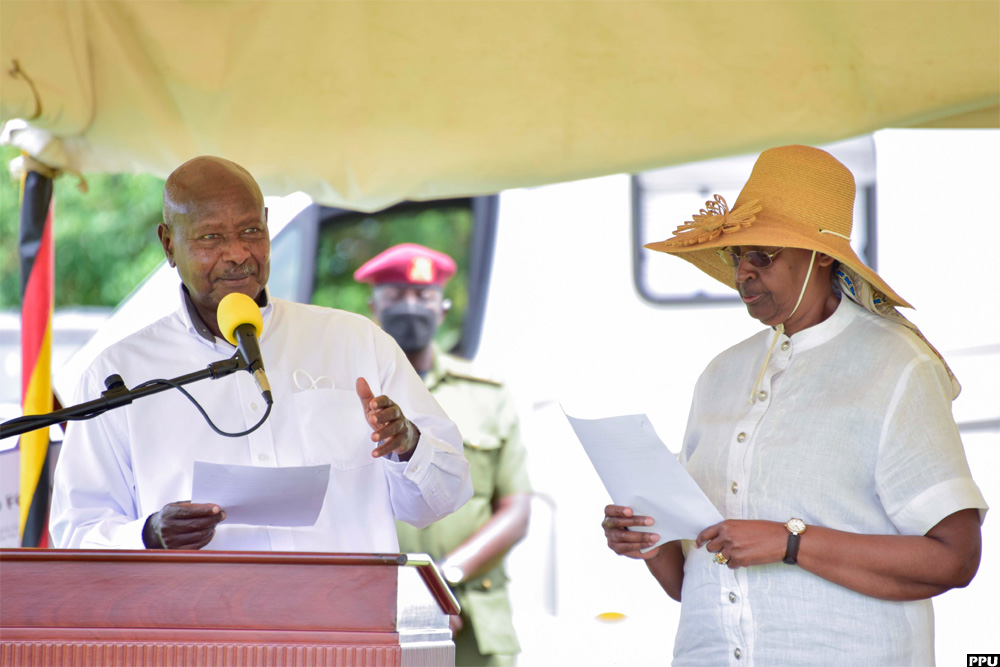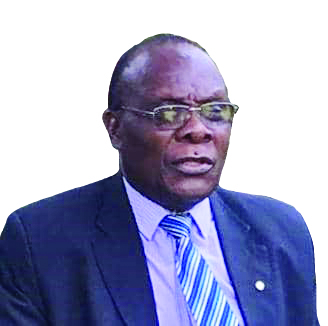Urgency for quality education and critical thinking
Nov 10, 2023
Countries in the Southern Hemisphere that have developed have demonstrated that their people are the biggest resource that must have the skills to participate in the exploitation and use identified opportunities.

Minister of Education and Sports, Janet Museveni and His Excellency President Yoweri Kaguta Museveni
Admin .
@New Vision
OPINION
Professor Eriabu Lugujjo
By Professor Eriabu Lugujjo
At the 20th anniversary celebrations of the National Council for Higher Education, the occasion was graced by the Minister of Education and Sports, Janet Museveni and His Excellency President Yoweri Kaguta Museveni, who was the chief guest.
In her address, the minister implored all higher education institutions in Uganda (public and private universities and other degree- awarding institutions) to ensure that they deliver quality across the entire chain of education/training.
The graduates thereof would be appropriately skilled to meet the demands and expectations of labour market and socio-economic development targets. This gave rise to wide coverage since the inception of the first Education White Paper of April 1992.
About 220 recommendations were made; one of them was to set up comprehensive secondary schools that would feed universities and tertiary institutions with well-prepared high school graduates. Five years later, in 1997, Vision 2025 was developed and outlined a participatory process for formulating a long-term vision for Uganda. A number of policies followed thereafter.
The total aggregate of these policies was the enaction of The Uganda Vision 2040 that put emphasis on developing and strengthening human resources in the Science, Technology, Engineering and Mathematics Education (STEM) at all levels.
Countries in the Southern Hemisphere that have developed have demonstrated that their people are the biggest resource that must have the skills to participate in the exploitation and use identified opportunities.
In his Treatise” From Third World to First” the founding father of Singapore Lee Kwan Yew gave a blue print for accelerated growth and development. He nurtured, attracted and retained talent, especially in the STEM and Business Management disciplines and kept the Government clean. He noted that STEM education is fundamental to the development of the nation and plays a pivotal role in producing a skilled and innovative workforce.
Uganda currently faces challenges in delivering quality STEM education at all levels due to limited resources, outdated equipment, and inconsistent supply of consumable materials. Some developing countries, like Uganda, have addressed this scarcity by establishing common integrated laboratories where:
- Schools in close proximity share the same facilities that include well equipped laboratories in each science discipline and trained laboratory attendants/technicians;
- Universities could share research and innovation and common facilities for this would enhance and promote interdisciplinary collaboration
- Inter-university corporation programmes could be established where scarce resources of STEM professors would be shared among universities that have dire needs.
While commissioning a sh12b, science and technology laboratory complex at Ndejje University, President Museveni emphasised the need to create and retain a critical mass of people teaching science and engineering and technicians at diploma and certificate levels. The current real challenge and the fury of urgency is the inadequate implementation of the well-designed National Policy frameworks. This possibly arises from lack of comprehensive and holistic approach to planning.
All Higher Education Practitioners in this country aspire to deliver quality education characterised by diversification, differentiation, harmonisation, relevance, flexibility and resilience. However, the essential ingredients and inputs in this sub sector are continuing to be out of phase with the expectations.
Government universities have had a favorable share of capital input and have upgraded their training facilities. Indeed, all Government loans notably from Africa Development Bank, World Bank and Bilateral Partners such as SIDA and Belgium Technical Corporation, all channel the funds to Public Institutions to pursue mainly STEM Programmes.
A clear picture is now emerging among Private Universities, heavily laden with loans and find considerable constraints to pay their STEM lecturers, let alone sponsor them for PhD research and upgrading.
Most of the private STEM deliverers are Chartered Institutions, meaning that they have labored to reach this level of recognition and hence deserve support from Government. In fact, the recent listing of the top 500 Scientists in Uganda shows that they come from 31 Universities out of which 9 are Public Universities. This shows that Private Universities are harboring a great deal of research potential that requires to be harnessed through support by Government.
It is worth noting also that most of science research is mainly in health and agriculture subsector. More investment is needed in the physical sciences and mathematics. This is the area that provides a wide spectrum of scientists.
The recent increment of salaries for scientists in public educational institutions has enhanced retention and promote recruitment of workers in this area. However, it would be fair and proper if STEM workers in private chartered institutions could also be covered in the salary increment for enhanced quality education.
The Chief Guest, President Museveni addressed the gathering after inspecting the stalls in the exhibition. He longed for more fundamental innovation based on intrinsic critical thinking. He gave an example of the Law of Gravitation and its basis. This was considered by Professor Richard Feynman, in his book “The Character of Physical Law”. This Law has been called ‘the greatest generalization achieved by a human mind.’
The scientists first observed the way the planets seemed to move in the sky and concluded that they all, along with the earth, went around the sun. This discovery was later made independently by Copernicus, and a number of questions were asked such as:- Exactly how do they go around the Sun and using what kind of motion; do they go with the sun as the centre of the circle; do they make another form of curve; and how fast do they move? These questions were addressed by two imminent scientists, 500 years ago.
Tycho-Brahe (1546-1601), a rich Danish astronomer who owned an island near Copenhagen set up an experimental station on his island and recorded night after night the positions of the planets. It took him several years to execute such a painstaking piece of work. The data collected by Tycho came into the hands of Johannes Kepler (1571-1630), a German astronomer and mathematician who also took many years analyzing the data and formulated the laws now known as Kepler’s laws of gravitation.
Derived from the above story is that: In order to advance science, there is need for passionate trained individuals who should be well facilitated and working in very well equipped laboratories in a supportive funding ambient. I have tried to address the President’s anxiety in that; just as gravity may be a physical law, it required the genius of two individuals with adequate facilities to unravel the hidden treasure therein.
His Excellency advised that for scientists, there is need for detailed studies, elaborate research and a painful path to deep understanding of phenomena. Hence there is urgent need to interest young people in basic science research.
The writer is the executive director of the Uganda Vice Chancellors Forum

No Comment